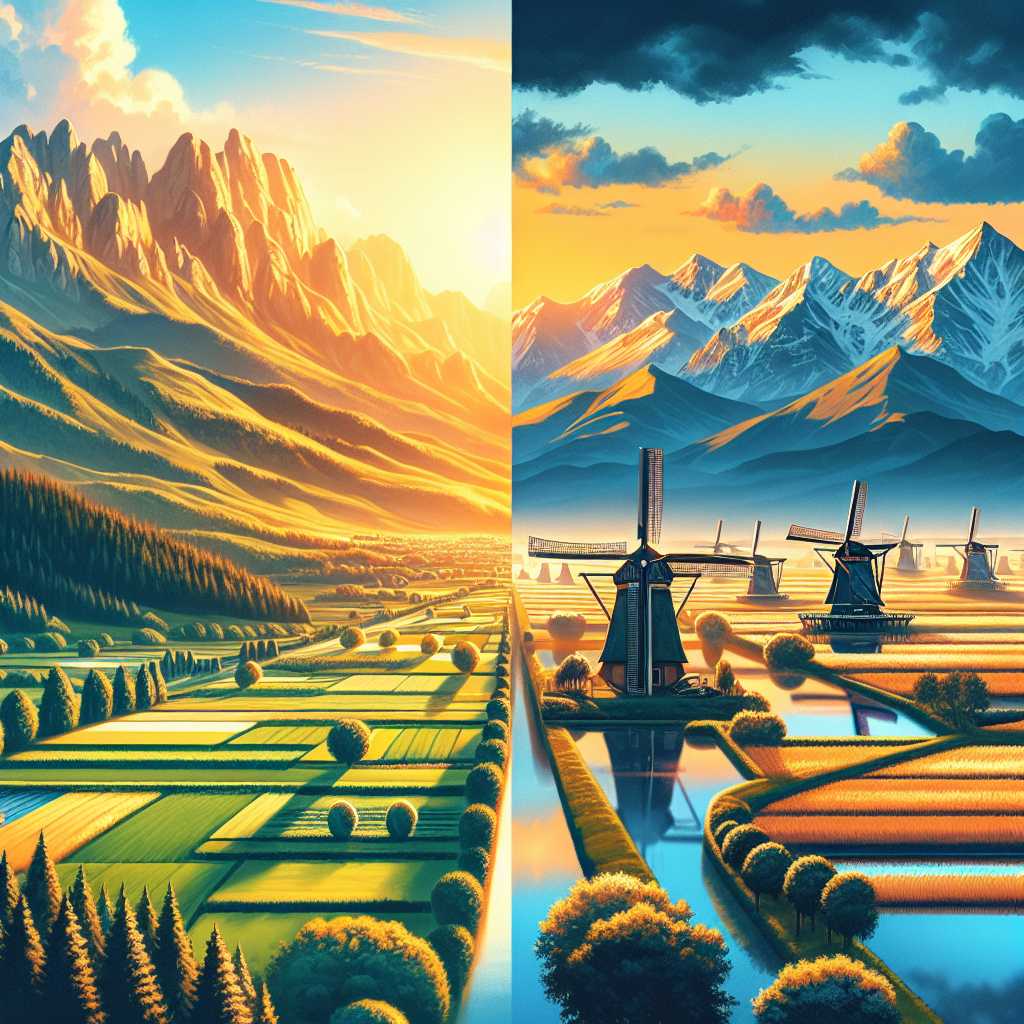Romania vs Netherlands: A Comparative Overview of Two European Nations
The Netherlands and Romania are two European countries with distinct cultural, economic, historical, and social backgrounds. The following article provides a comprehensive comparative analysis between these two nations, considering various aspects such as geography, economy, culture, and political landscapes.
Geography and Demographics of Romania and the Netherlands
Romania, situated in Southeastern Europe, is significantly larger than the Netherlands in terms of land area. It borders the Black Sea and several countries, including Hungary, Serbia, Ukraine, Moldova, and Bulgaria. Romania’s diverse terrain includes mountains, hills, and plains providing varied landscapes and climates.
In contrast, the Netherlands is located in Northwestern Europe. Known for its flat topography, with a substantial portion of its territory reclaimed from the sea through a sophisticated system of dykes and pumps, it boasts a coastline along the North Sea. The country shares borders with Germany to the east and Belgium to the south.
Demographically, Romania has a larger population than the Netherlands with a significant diversity of ethnic groups. The official language is Romanian while Hungarian and Roma are recognized as minority languages. The Netherlands has a smaller but denser population with Dutch as its primary language. Both nations are members of the European Union and have seen migration contributing to their demographic makeup.
Economic Comparison: A Look at Prosperity and Challenges
The Romanian economy has historically been based on agriculture but has diversified since the late 20th century into services, industry, and technology sectors. Following the fall of communism in 1989, Romania underwent a transition to a market economy which has seen significant growth despite various challenges such as corruption and infrastructure needs.
Conversely, the Netherlands boasts one of the world’s most open economies and is known for its stable industrial relations, moderate unemployment and inflation rates, significant trade surplus, and important role as a European transportation hub. Its economy is predominantly service-oriented with finance, shipping, logistics, and international trade playing crucial roles.
Both economies face challenges including adapting to technological changes, sustainability concerns and dealing with political uncertainties within Europe. The economic policies in both countries continually evolve to address these national and international economic trends.
Cultural Landscape: Rich Histories and Contemporary Life
Culturally both Romania and the Netherlands have rich histories with prominent traditions in art, literature, music, and folklore.
Romanian culture is influenced by its geographical position and historical connections; it shares similarities with its Balkan neighbors but retains unique elements such as its Latin-based language and customs. Meanwhile, Dutch culture is often associated with its famous painters such as Rembrandt or Van Gogh, progressive society norms, celebrations like King’s Day and distinctive architecture.
The present-day social life in Romanian cities blends modern lifestyle orientations with traditional practices while rural areas preserve age-old customs. Public cultural life in the Netherlands epitomizes western liberal attitudes but also reveres festive traditions reflective of its historical merchant roots.
Political Systems: Governance in Romania and the Netherlands
Politically, Romania is a semi-presidential republic where executive functions are shared between the president and prime minister. Its democratization process after 1989 has been marked by efforts to align with European norms although there have been confrontations regarding legal reforms and anti-corruption measures.
The Netherlands operates under a parliamentary constitutional monarchy where the monarch’s role is mostly ceremonial. Dutch politics are known for their practice of coalition governments which entail negotiation processes to form cabinets representing a majority in their multiparty system.
Both countries participate within EU political frameworks but take different approaches according to their national interests. EU membership has impacted domestic policies particularly relating to trade, agriculture policies, regional development funding availability as well as judicial and human rights standards.

